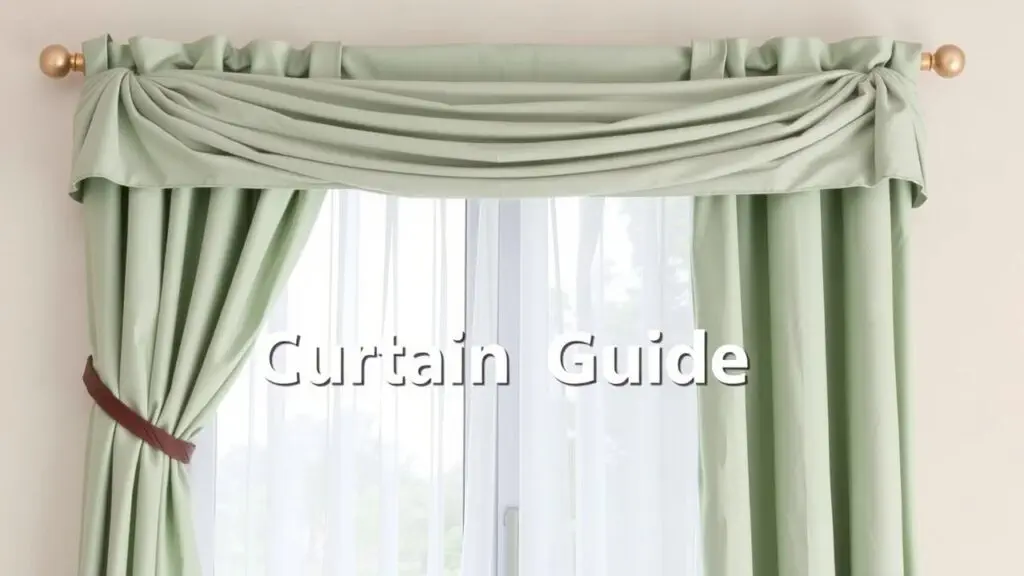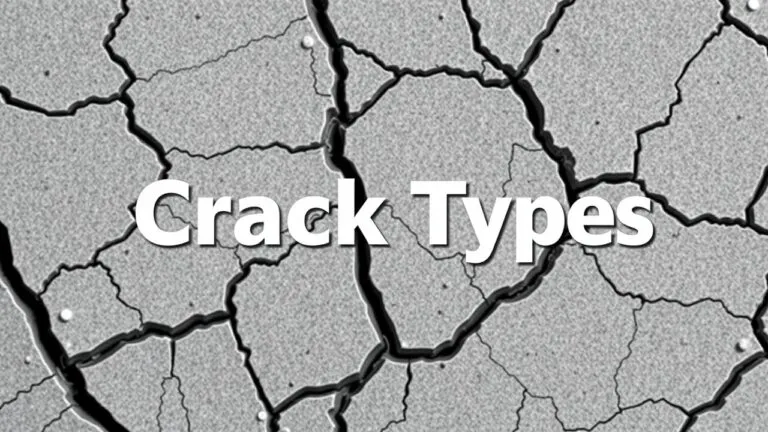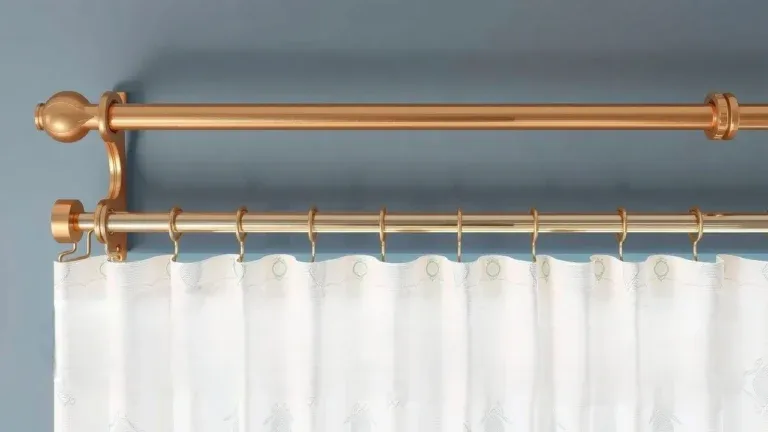Types of curtain pleats vary widely, from simple pinch pleats to more elaborate euro pleats and box pleats. This guide explores various drapery pleat styles for curtains and other window treatments, helping you choose the best look for your home decor.
What Are Curtain Pleats?

Curtain pleats are folds in fabric that give a nice and tidy look to window treatments. They help curtains hang properly and can change how a room feels. The types of curtain pleats you choose can change not just the look, but also how much light comes in and how private your space feels.
Different styles of curtain folds can set different moods. For example, pinch pleats are great for a formal vibe, while grommet or tab-top styles feel more relaxed. Also, the way fabric drapes is influenced by the pleat type you use. Heavier fabrics need deeper folds to hang right, while lighter ones might look better with shallower pleats.
Why Understanding Different Types of Curtain Pleats Matters?
Choosing the right style of curtain pleat is key to matching your room’s decor. Each type has its own look and works better in certain settings.
Here are some things to think about when picking curtain pleats:
- Room Style: Traditional rooms fit well with classic styles like pencil or double pinch pleats. Modern spaces may do better with flat panels or grommet tops.
- Fabric Type: Heavy fabrics usually suit structured pleating methods like box or knife pleats. Sheer curtains work nicely with softer options.
- Window Size: Big windows look good with wider spacing between folds, like goblet or triple pinch, which adds impact without looking too busy.
- Budget Considerations: Some styles are cheaper than others when it comes to installation—some folks might try DIYing while others might go for a pro.
Keeping these factors in mind will help you choose curtain headings that fit your needs and make your home decor shine!
Popular Types of Curtain Pleats Explained
Pinch Pleats: The Timeless Classic
Pinch pleats are a great choice for adding elegance to your windows. This style features folds that are pinched together at the top, giving a structured look. There are three main types:
- Single Pinch Pleat: This has one fold per section, creating a classic look.
- Double Pinch Pleat: It has two folds, adding more volume and depth.
- Triple Pinch Pleat: With three folds, this option provides maximum fullness, perfect for luxurious fabrics.
These curtains fit well in formal living rooms or bedrooms. Rich fabrics like velvet and brocade enhance their beauty, creating an elegant drape.
Box Pleats: Crisp & Structured Look
Box pleats offer a clean-lined style that works well in contemporary spaces. They involve folding fabric into rectangular shapes that alternate directions for sharp edges.
Box pleats are ideal for minimalist interiors because they add structure without overwhelming the room. Medium-weight cotton blends or linen work best since they keep their shape while allowing light to filter through nicely.
Goblet Pleats: Sophisticated Grandeur
Goblet pleats add luxury to any room with their rounded folds that look like goblets at the top of each panel. This design is visually striking and perfect for formal settings.
These curtains work well for large windows and pair beautifully with heavy jacquard fabrics or silk. These materials help maintain the shape of the goblet pleats and add richness to your decor.
Ripple Fold Curtains (Wave Curtains): Soft Elegance
Ripple fold curtains create continuous waves along the header. This gives a soft yet refined look that’s perfect for modern homes. Their relaxed style makes them great for casual settings and romantic bedroom designs.
This style is especially effective with sheer fabrics that let natural light gently diffuse into your space while still keeping some privacy.
French Drapery Pleats (Two-Prong & Three-Prong Variations)
French drapery pleats bring intricate fullness through two-prong or three-prong styles:
- Two-Prong French Pleat: This option offers moderate fullness without being too bulky.
- Three-Prong Variation: It provides more fullness, making it suitable for heavier materials like damask or velvet often found in formal settings.
Both styles create an upscale ambiance in traditional home designs by showing off detailed stitching techniques.
Grommet Top Curtains as an Alternative Style
Grommet top curtains bring modern simplicity to window treatments. They feature metal rings (grommets) threaded onto rods, allowing them to slide easily. This design fits well with industrial themes and enhances minimalist décor due to its sleek lines and functionality—making it easy to open and close these stylish panels whenever you want!
Choosing the Right Pleat Style for Your Room
Room Style and Decor Considerations
When picking a pleat style for your room, think about how different options fit with your home decor. For traditional interiors, classic styles like pinch pleats or goblet pleats work well. They add a touch of class and go great with rich fabrics and detailed furniture.
In modern spaces, consider ripple fold curtains or grommet top curtains. These give a clean look while still being practical. They match nicely with contemporary furniture and enhance the sleek feel of the space.
For minimalist designs, box pleats are a smart choice. They provide a simple look that fits nicely in tidy areas. This style keeps things light and airy, especially when paired with soft, neutral colors.
Remember to think about how these styles affect the overall feel of the room. Look at things like color choices, furniture shapes, and other decorations to make sure everything goes together.
Fabric Choice and Pleat Suitability
The type of fabric you choose can change how well your curtains work. Heavier fabrics like velvet are perfect for structured looks such as pinch or French drapes because they hold their shape well.
On the other hand:
- Lightweight fabrics like sheers work great with ripple folds to create gentle cascades that let light in.
- Medium-weight fabrics like cotton blends or linen are good for box and grommet styles. They have enough weight for structure but aren’t too stiff.
When choosing fabric for specific pleating techniques, consider how it looks and how long it will last. Also, think about how easy it is to take care of them and how they deal with sunlight during the day.
Additional Factors Influencing Pleat Selection
Also, think about extra factors like energy efficiency when picking your fabric. Heavier materials often offer better insulation than lighter ones.
Here are some points to keep in mind:
- How much natural light do you want? Some fabrics let more light in based on how tightly they’re woven.
- What about privacy? Certain stylish options might not cover everything you want without careful thought.
Picking the right mix of room style and fabric helps create a look that’s not just nice to see but also works well for your needs in any space.
Window Size, Shape, and Light Control
Optimizing Pleats for Different Window Sizes and Shapes
When picking curtain pleats, think about your window’s size and shape. Different pleat styles can really change how your windows look. For example, tailored curtains with pinch pleats fit standard rectangular windows well. They create clean lines that match traditional designs. On the other hand, bay windows have multiple angles. Using soft fabric with ripple fold pleats helps the curtains drape nicely around those corners.
To measure for custom curtains or bespoke options, follow these steps:
- Measure Width: Measure the total width of your window frame from one side to the other. If you want your curtains to go beyond the frame (which is a good idea), add 4-8 inches on each side.
- Measure Height: Measure from where you plan to hang your curtain rod down to either just above the sill or all the way to the floor if you want a dramatic look.
- Consider Pleat Style: Different pleating styles need different amounts of fabric; some styles take up more space than others.
Accurate measurements help you choose which type of curtain heading works best for your window’s unique shape. Options like tab tops give a casual feel, while grommet tops lean towards modern looks.
Light Control and Privacy with Different Pleat Styles
Curtain pleats are key for controlling light in a room and ensuring privacy. When comparing sheer fabrics with heavier materials like blackout cloths, it’s clear that they provide different levels of light filtering.
Sheer curtains let sunlight filter through softly while still letting you see outside during the day. But at night, they offer little privacy unless paired with another layer. Heavy fabric pleats are great for blocking out light completely but can make rooms feel darker during the day unless mixed with lighter options.
Here’s how various pleat styles help balance privacy and light:
- Pinch Pleats: These create fuller folds that close tightly when needed.
- Ripple Fold: This style offers smooth lines and lets you control how much light comes in based on how far apart you open them.
Knowing how these details work together helps homeowners choose what fits their style and practical needs for both visibility outside and creating a cozy space indoors.
Cost Comparison of Different Pleat Styles
When you think about curtain pleats, it’s super important to know how different styles can affect your wallet. The type of pleat you choose can really change how your curtains look and cost. Here’s a breakdown of some common pleat styles:
| Pleat Style | Description | Cost Range (per panel) |
|---|---|---|
| Pencil Pleats | Simple and narrow folds for a neat appearance. | $30 – $50 |
| Single Pleats | Straight folds for a clean look. | $25 – $45 |
| Cartridge Pleats | Soft rounded tops for a nice drape; good for formal spaces. | $40 – $70 |
| Goblet Pleats | Folds that look like goblets; very stylish. | $50 – $90 |
| Pinch Pleats | Gathered at points for fullness; classic and flexible. | $35 – $65 |
| Triple Pinch Pleats | Three gathers for added volume; very full look. | $60 – $100 |
| Double Pinch Pleats | Two gathers per section for even more fullness. | $55 – $95 |
| Euro Pleats | Flat tops for a sleek drape without visible hooks. | $40 – $80 |
| Box Pleats | Structured folds give a modern touch; very neat. | $30 – $60 |
| Inverted Box Pleats | Folds going in the opposite direction; adds depth. | $35 – $75 |
Factors Influencing Cost
The price of curtains isn’t just about pleat style; other factors matter too.
- Fabric Choice: The fabric you pick can change the price a lot.
- Velvet Curtains: They feel luxurious, costing about $20 to $100 per yard.
- Silk Curtains: A fancy choice that usually costs between $30 to $150 per yard.
- Installation Costs:
- Custom Curtains: Professional installation ranges from about $100 to $300 based on how tricky the job is.
- Ready-Made Curtains: These are cheaper because they just need basic hanging.
By knowing these things, you can decide which curtain heading styles work with your budget while giving you the look you want.
DIY vs. Professional Installation
Deciding whether to go DIY or hire a pro is big when putting up curtains.
Pros and Cons of Each Option
DIY Curtain Projects:
- Usually saves money if you’re handy with sewing or want something simple.
- Time spent depends on your skill level—some beginners might take longer than expected.
Professional Drapery Installation Services:
- They bring know-how to make sure everything fits right and is put up well.
- This costs more upfront, but it can save time and headaches during setup.
In the end, thinking about these pros and cons will help you pick what fits your budget and skills for decorative window treatments like different types of curtain pleating styles.
Curtain Pleats Maintenance and Troubleshooting

Care and Maintenance Tips for Curtain Pleats
Keeping your curtains fresh requires regular care based on fabric choices used in drapery installation:
Cleaning methods should match fabric types:
- Cotton Curtains: These are usually machine washable; use cold water settings and air dry when possible.
- Silk Drapes: These need professional cleaning since they’re delicate; keep them out of direct sunlight to prevent fading.
- Polyester Fabrics: They tend to be durable; spot clean stains but wash occasionally based on instructions from the manufacturer.
For ongoing care:
- Rotate curtains if they get uneven sun exposure—this stops fading from happening more on one side than another.
Choosing fabrics based not just on looks but ease of care makes long-term maintenance simpler.
Troubleshooting Common Issues with Curtain Pleats
Even well-kept curtains might have issues over time, such as uneven hems or misaligned folds caused by improper hanging during setup or wear-and-tear from daily use!
Common problems include:
- Uneven Hems: If hems seem off after washing/drying cycles, adjust lengths by resewing them back into place carefully to keep symmetry intact!
- Misaligned Pleats: Check hardware attachments first before trying adjustments manually since sometimes rods/hooks can loosen up leading to shifting positions.
Solutions involve simple fixes like resewing seams along edges and tightening any loose fittings during installation so everything stays aligned moving forward!
Frequently Asked Questions (FAQs) about Curtain Pleats
What are butterfly pleats?
Butterfly pleats create soft, rounded folds. They offer a romantic look and work well in casual settings.
What are inverted pleats?
Inverted pleats have the fabric folded inward. This design gives a tailored and structured appearance, ideal for modern spaces.
What is the monarch pleat style?
Monarch pleats feature large, elegant folds. They provide a dramatic effect, suitable for formal rooms or luxury designs.
How do I choose between different curtain heading styles?
Consider your room’s decor and desired light control. Styles like eyelet or tab-top offer a casual look, while pinch pleats provide elegance.
What are relaxed pleats?
Relaxed pleats hang loosely without sharp creases. They create a laid-back vibe, perfect for cozy or cottage-style interiors.
What fabric choices work best with different pleat styles?
Heavy fabrics suit structured styles like box or goblet pleats. Lightweight fabrics work well with ripple folds or relaxed pleating for a softer drape.
Additional Curtain Pleat Styles to Explore
- Three Finger Pinch Pleat: Provides a fuller look while being easy to open and close.
- Tuxedo Pleat: Features flat fabric on top with soft folds below, perfect for modern elegance.
- Wave Pleat: Offers gentle curves for a smooth appearance; great for contemporary spaces.
- Smocked Pleat: Creates gathered effects at intervals, adding texture and depth.
- Double Euro Pleats: Combines two folds in one pleat for extra fullness.
- Pleated Valances: Add decorative flair to the top of windows; available in various styles.
Each curtain style impacts your space’s overall feel and functionality. Explore these options to find the best fit for your needs.
Related Topics
- Types of curtain fabrics
- Types of window treatments
- Types of curtain headings
- Types of curtain hardware
- Types of drapery installation services
- Types of home decor styles
- Types of window sizes and shapes
- Types of light control options for curtains



Types of Curtain Pleats: A Complete Guide to Pinch Pleats, Euro Pleats & More